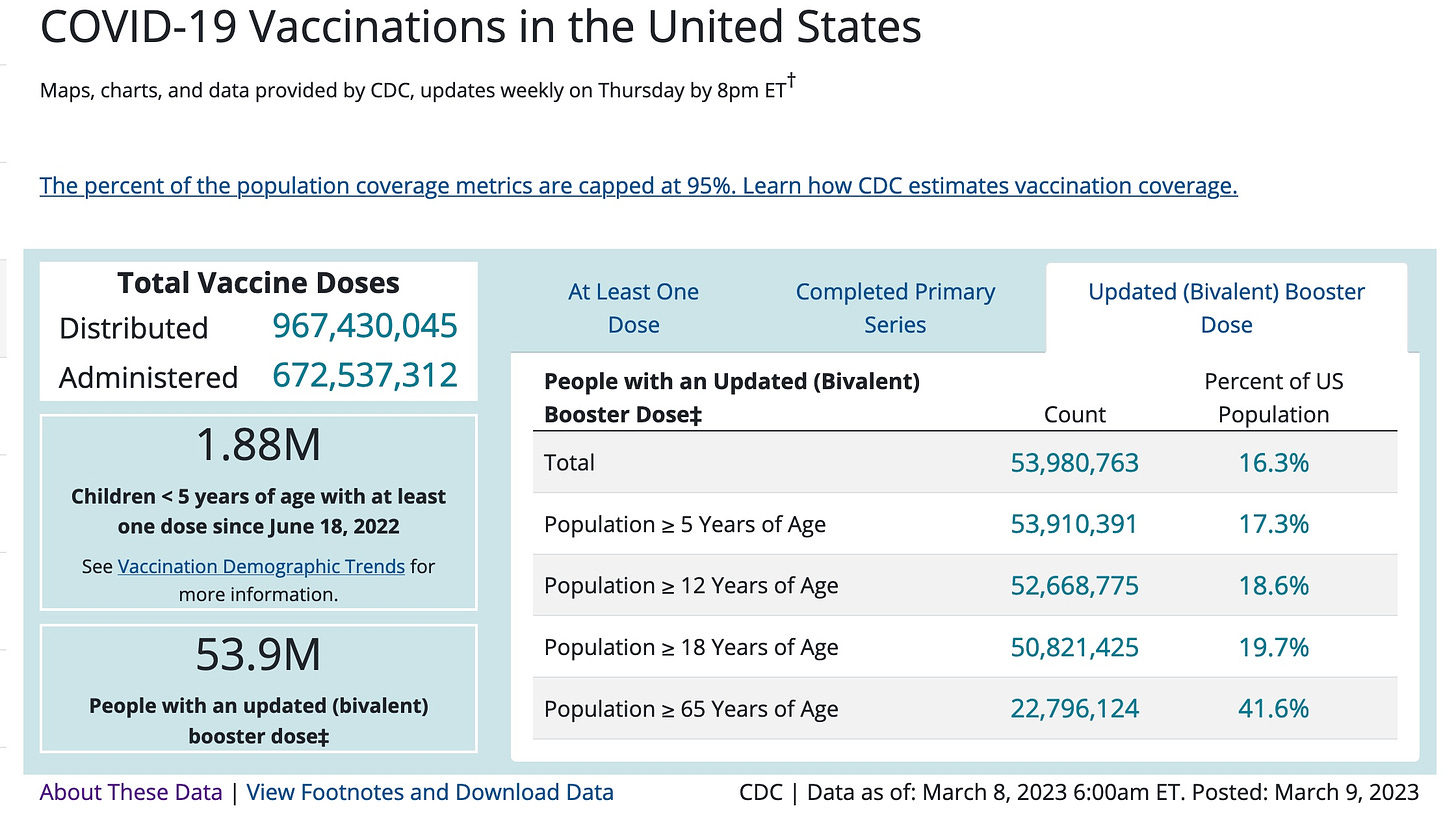https://covid.cdc.gov/covid-data-tracker/#vaccinations_vacc-people-booster-percent-total
How CDC Estimates Vaccination Coverage aka How CDC gets away with claiming that more people are vaccinated than actually got vaccinated
CDC estimates the number of people receiving at least one dose, the number of people who are fully vaccinated, and the number of people with booster doses. CDC estimates are based on data that include a dose number (first, second, or booster). To protect the privacy of vaccine recipients, CDC receives data without any personally identifiable information (deidentified data). Each jurisdiction or provider uses a unique person identifier to link records within their own systems. However, CDC cannot use the unique person identifier to identify individual people by name.
There are challenges in linking records when someone receives vaccine doses in different jurisdictions or from different providers. That person could receive different unique person identifiers for different doses. CDC may not be able to link multiple unique person identifiers for different jurisdictions or providers to a single person, and subsequent doses may appear to be a first dose when reported. Thus, CDC’s data may over-estimate first doses and under-estimate subsequent doses.
Another issue that poses challenges to estimating doses administered is that different jurisdictions and providers use different reporting practices. As people receiving doses are attributed to the jurisdiction in which they reside, the reporting method might change between doses if they move to a different jurisdiction. Also, CDC may lack information about a person’s residence. These issues can cause CDC’s dose number estimates to differ from those reported by jurisdictions and federal entities.
CDC has capped estimates of vaccination coverage shown on COVID Data Tracker at 95%. This cap helps address potential over-estimates of vaccination coverage due to first, second, and booster doses that were not linked. Other reasons for overestimates include census denominator data not including part-time residents or potential data reporting errors. Previously, CDC had capped estimates of vaccination coverage at 99.9%. CDC changed the cap to 95% on December 9, 2021, to account for differences in the accuracy of vaccination coverage estimates between different jurisdictions.
[In other words, CDC does not want to get caught again claiming that more people got vaccinated than the amount of vaccine reaching their jurisdiction.—Nass]
CDC encourages people to bring their CDC COVID-19 Vaccination record card with them to their appointment for another COVID-19 vaccine dose because having the card will help ensure the doses are linked.





The lies don’t have an end with these liars in seats of authority. It must be exhausting creating new semi-plausible lies to make up for prior, obviously implausible lies.
The nooses await.
What a tangled web we weave....